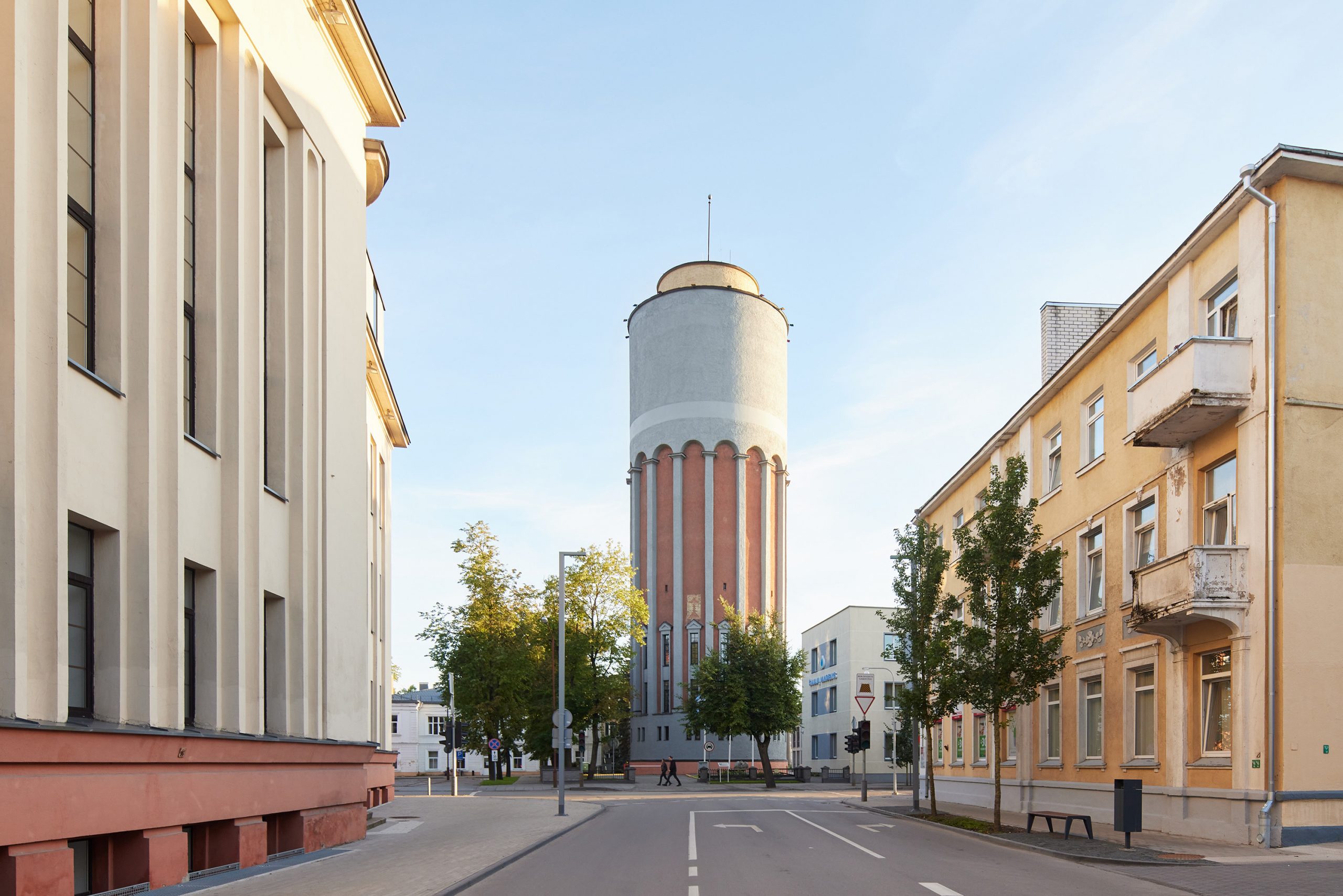
9. Šiauliai water tower
TagAbout
At 45 metres high, it is one of the most prominent landmarks of Šiauliai, with a strong visual connection to the main architectural symbol of the city – the graceful Renaissance Cathedral of Saints Peter and Paul. The water tower marks the beginning of centralised water supply in Šiauliai in 1948. For a long time, from around 1963, the purpose of the building could be guessed by looking at the band of shimmering waves running around the entire perimeter of the tower’s facade. This building, which was built over a long period of time, with its inter-war architectural expression, contains many fascinating details of the city’s history.The construction of the water tower began in 1939, based on the sketches of P. Markūnas, an innovator of reinforced concrete structures, and some of the drawings by A. Janulionis, but construction was interrupted by the Nazi occupation, and was resumed only after the war, in 1945, and lasted for three years.
Any visitor to the city walking along Vasario 16-osios Street will easily notice this waterworks building with its laconic and clear compositional structure, which retains a Soviet interior decorated with monumental ceramic works by professional artists. In 1974, the first of four floors became home to the Waterworks Museum, an important element of the tower’s interior spaces, to which new exhibits are regularly added.
BackAddress
Vytauto st. 103How to get there
Nearest bus stop - PoliklinikosVisiting time
2022 September 24 10:00–18:002022 September 25 10:00–17:00
Šešt. 13:00 val. ir sekm. 13:00 val., 17:00 val. ekskursijos vyks ukrainiečių kalba.
Tours begin every 30 minutes and last 45 minutes. Last tour on Saturday starts at 6:00 PM, on Sunday – at 5:00 PM.
SVARBU: ekskursijos rekomenduojamos ne jaunesniems nei 6 metai.
No in-advance registration is required. Access to the buildings will be managed by forming queues.
Expected occupation: high.
- 20